-
火爆全网,Python+Pytest+Allure+Jenkins接口自动化框架(步骤+源码)
前言
1、接口测试基础
接口测试是对系统和组件之间的接口进行测试,主要是效验数据的交换,传递和控制管理过程,以及相互逻辑依赖关系。其中接口协议分为HTTP,RPC,Webservice,Dubbo,RESTful等类型。
1)需求评审,熟悉业务和需求
2)开发提供接口文档
3)编写接口测试用例
4)用例评审
5)提测后开始测试
6)提交测试报告两种常见的 HTTP 请求方法:GET 和 POST
2、项目说明
本框架是一套基于Python+Pytest+Requests+Allure+Jenkins而设计的数据驱动接口自动化测试的框架。
技术栈:
Python、Pytest、Requests、Pactverity、Excel、Json、Mysql、Allure、Logbook、Git、Jenkins3、接口自动化框架架构图
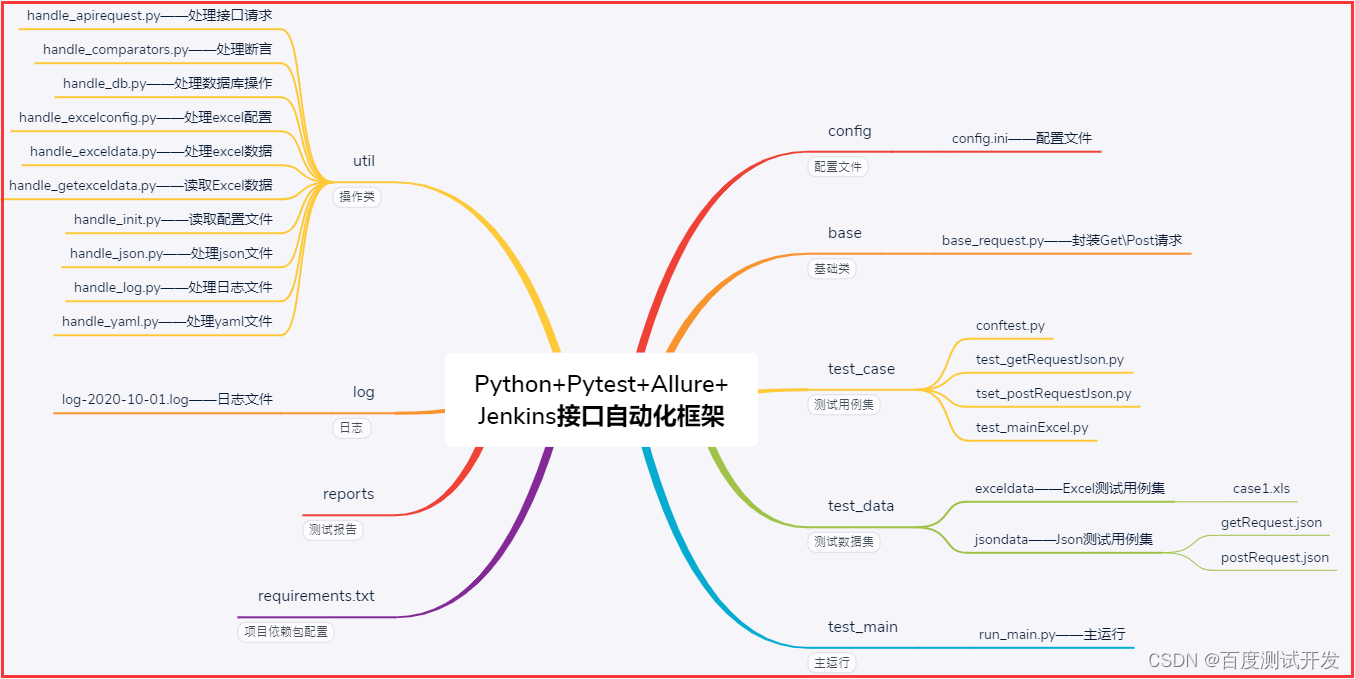
4、项目功能
Python+Pytest+Allure+Jenkins接口自动化框架,实现Excel或Json维护测试用例,支持数据库操作,利用封装的请求基类调取相应的测试用例接口,获取配置文件中的环境地址与环境变量。
结合Pytest进行单元测试,使用LogBook进行记录日志,并生成allure测试报告,最后进行Jenkins集成项目实现集成部署,并发送测试报告邮件。
5、代码设计功能说明
1)工具类封装
Log日志
项目中的log日志是logbook进行日志记录的,方便测试开发调试时进行排错纠正或修复优化。日志可选择是否打印在屏幕上即运行时是否在终端输出打印。日志格式输出可调整。
handle_log.py部分源码
def log_type(record, handler): log = "[{date}] [{level}] [{filename}] [{func_name}] [{lineno}] {msg}".format( date=record.time, # 日志时间 level=record.level_name, # 日志等级 filename=os.path.split(record.filename)[-1], # 文件名 func_name=record.func_name, # 函数名 lineno=record.lineno, # 行号 msg=record.message # 日志内容 ) return log # 日志存放路径 LOG_DIR = BasePath + '/log' print(LOG_DIR) if not os.path.exists(LOG_DIR): os.makedirs(LOG_DIR) # 日志打印到屏幕 log_std = ColorizedStderrHandler(bubble=True) log_std.formatter = log_type # 日志打印到文件 log_file = TimedRotatingFileHandler( os.path.join(LOG_DIR, '%s.log' % 'log'), date_format='%Y-%m-%d', bubble=True, encoding='utf-8') log_file.formatter = log_type # 脚本日志 run_log = Logger("global_log") def init_logger(): logbook.set_datetime_format("local") run_log.handlers = [] run_log.handlers.append(log_file) run_log.handlers.append(log_std) return ""- 1
- 2
- 3
- 4
- 5
- 6
- 7
- 8
- 9
- 10
- 11
- 12
- 13
- 14
- 15
- 16
- 17
- 18
- 19
- 20
- 21
- 22
- 23
- 24
- 25
- 26
- 27
- 28
- 29
- 30
- 31
打印在终端的日志,如下图所示。

同时运行项目后,会在项目文件log中自动生成一个以当天日期命名的log文件。点击log日志文件可查看日志详情即项目运行时所记录的日志或报错日志。如下图所示。

配置文件
项目中涉及到一些配置文件如username、password或环境变量时,我们可通过配置文件来获取配置值。通过配置文件中key与value的定义来确定获取配置文件的值。
handle_init.py部分源码
class HandleInit: # 读取配置文件 def load_ini(self): file_path = BasePath + "/config/config.ini" cf = configparser.ConfigParser() cf.read(file_path, encoding='UTF-8') return cf # 获取ini里面对应key的value def get_value(self, key, node=None): if node == None: node = 'Test' cf = self.load_ini() try: data = cf.get(node, key) logger.info('获取配置文件的值,node:{},key:{}, data:{}'.format(node, key, data)) except Exception: logger.exception('没有获取到对应的值,node:{},key:{}'.format(node, key)) data = None return data- 1
- 2
- 3
- 4
- 5
- 6
- 7
- 8
- 9
- 10
- 11
- 12
- 13
- 14
- 15
- 16
- 17
- 18
- 19
- 20
获取配置文件中的值日志如下图所示。

API接口请求
获取相关测试用例及接口用例配置,记录请求相关参数的日志,定义Allure测试报告的步骤。
handle_apirequest.py部分代码
class ApiRequest: def api_request(self, base_url, test_case_data, case_data): get_name = None get_url = None get_method = None get_headers = None get_cookies = None get_case_name = None get_case_params = None response_data = None try: get_name = test_case_data['config']['name'] get_url = base_url + test_case_data['config']['url'] get_method = test_case_data['config']['method'] get_headers = test_case_data['config']['headers'] get_cookies = test_case_data['config']['cookies'] except Exception as e: logger.exception('获取用例基本信息失败,{}'.format(e)) try: get_case_name = case_data['name'] get_case_params = case_data['params'] except Exception as e: logger.exception('获取测试用例信息失败,{}'.format(e)) with allure.step("请求接口:%s,请求地址:%s,请求方法:%s,请求头:%s,请求Cookies:%s" % ( get_name, get_url, get_method, get_headers, get_cookies)): allure.attach("接口用例描述:", "{0}".format(get_case_name)) allure.attach("接口用例请求参数:", "{0}".format(get_case_params)) logger.info( '请求接口名:%r,请求地址:%r,请求方法:%r,请求头:%r,请求Cookies:%r' %\ (get_name, get_url, get_method, get_headers, get_cookies)) logger.info('请求接口名:%r,请求接口用例名:%r,接口用例请求参数:%r' %\ (get_name, get_case_name, get_case_params)) try: response_data = baseRequest.run_main(get_method, get_url, get_case_params, get_headers) except Exception as e: logger.exception('用例请求返回失败,{}'.format(e)) logger.info('请求接口名:%r,请求接口用例名:%r,返回参数:%r' % (get_name, get_case_name, response_data.json())) return response_data- 1
- 2
- 3
- 4
- 5
- 6
- 7
- 8
- 9
- 10
- 11
- 12
- 13
- 14
- 15
- 16
- 17
- 18
- 19
- 20
- 21
- 22
- 23
- 24
- 25
- 26
- 27
- 28
- 29
- 30
- 31
- 32
- 33
- 34
- 35
- 36
- 37
- 38
- 39
- 40
Excel数据处理
Excel测试用例

测试用例中维护在Excel文件中,类中定义如何获取Excel中的相关数据(如获取某个单元格的内容,获取单元格的行数,以及将数据写入Excel中等操作)。
handle_exceldata.py部分源码
class OperationExcel: def __init__(self, file_name=None, sheet_id=None): if file_name: self.file_name = file_name self.sheet_id = sheet_id else: self.file_name = '' self.sheet_id = 0 self.data = self.get_data() # 获取sheets的内容 def get_data(self): data = xlrd.open_workbook(self.file_name) tables = data.sheets()[self.sheet_id] return tables # 获取单元格的行数 def get_lines(self): tables = self.data return tables.nrows # 获取某一个单元格的内容 def get_cell_value(self, row, col): return self.data.cell_value(row, col)- 1
- 2
- 3
- 4
- 5
- 6
- 7
- 8
- 9
- 10
- 11
- 12
- 13
- 14
- 15
- 16
- 17
- 18
- 19
- 20
- 21
- 22
- 23
- 24
2)基类封装
请求基类封装
接口支持Get、Post请求,调用requests请求来实现接口的调用与返回。接口参数包括,接口地址、接口请求参数、cookie参数、header参数。
class BaseRequest: def send_get(self, url, data, header=None, cookie=None): """ Requests发送Get请求 :param url:请求地址 :param data:Get请求参数 :param cookie:cookie参数 :param header:header参数 """ response = requests.get(url=url, params=data, cookies=cookie, headers=header) return response def send_post(self, url, data, header=None, cookie=None): """ Requests发送Post请求 :param url:请求地址 :param data:Post请求参数 :param data:Post请求参数 :param cookie:cookie参数 :param header:header参数 """ response = requests.post(url=url, json=data, cookies=cookie, headers=header) return response # 主函数调用 def run_main(self, method, url, data, header, cookie=None): try: result = '' if method.upper() == 'GET': result = self.send_get(url, data, header, cookie) elif method.upper() == 'POST': result = self.send_post(url, data, header, cookie) return result except Exception as e: logger.exception('请求主函数调用失败:{}'.format(e))- 1
- 2
- 3
- 4
- 5
- 6
- 7
- 8
- 9
- 10
- 11
- 12
- 13
- 14
- 15
- 16
- 17
- 18
- 19
- 20
- 21
- 22
- 23
- 24
- 25
- 26
- 27
- 28
- 29
- 30
- 31
- 32
- 33
- 34
- 35
- 36
接口测试用例
引用Pytest来进行接口的单元测试,通过JSON中多个测试用例来做为参数化数据驱动。结合Allure制定相应接口的测试报告。在接口返回断言之前,我们先进行该接口的契约测试,
我们采用的是Pactverity的全量契约校验测试。当契约测试通过时,我们再进行返回参数的相关校验测试。
test_getRequestJson.py部分源码
@allure.feature('测试GET请求模块') class TestRequestOne(): @allure.title('测试标题') @allure.testcase('测试地址:https://www.imooc.com') @pytest.mark.parametrize('case_data', testCaseData['testcase']) def test_requestOne(self, case_data): try: api_response = apiRequest.api_request(baseurl, testCaseData, case_data) api_response_data = api_response.json() # pactverity——全量契约校验 config_contract_format = Like({ "msg": "成功", "result": 0, "data": EachLike({ "word": Like("testng") }) }) mPactVerify = PactVerify(config_contract_format) try: mPactVerify.verify(api_response_data) logger.info( 'verify_result:{},verify_info:{}'.format(mPactVerify.verify_result, mPactVerify.verify_info)) assert mPactVerify.verify_result == True except Exception: err_msg = '契约校验错误' logger.exception('测试用例契约校验失败,verify_result:{},verify_info:{}'.format(mPactVerify.verify_result, mPactVerify.verify_info)) try: for case_validate in case_data['validate']: logger.info('断言期望相关参数:check:{},comparator:{},expect:{}'.format(case_validate['check'], case_validate['comparator'], case_validate['expect'])) comparatorsTest.comparators_Assert(api_response, case_validate['check'], case_validate['comparator'], case_validate['expect']) logger.info('测试用例断言成功') except Exception as e: logger.exception('测试用例断言失败') except Exception as e: logger.exception('测试用例请求失败,原因:{}'.format(e))- 1
- 2
- 3
- 4
- 5
- 6
- 7
- 8
- 9
- 10
- 11
- 12
- 13
- 14
- 15
- 16
- 17
- 18
- 19
- 20
- 21
- 22
- 23
- 24
- 25
- 26
- 27
- 28
- 29
- 30
- 31
- 32
- 33
- 34
- 35
- 36
- 37
- 38
- 39
Alluer2测试报告
当我们运行主函数时,并生成对应的测试用例报告时,我们可以看到在该文件夹中会生成对应的json文件的测试报告。将json文件的测试报告转换成html形式的。命令如下
reports是json格式测试报告存放的目录位置,allure_reports是html测试报告文件生成的目录位置。allure命令如下。
allure generate reports -o allure_result/- 1
项目根目录下的allure_reports文件,存放的是allure生成的测试报告。可看出文件下有一个HTML文件,可通过Python的编辑器Pycharm来打开该HTML文件(测试报告),或可通过allure命令来打开该HTML,展示HTML测试报告。
下面是我整理的2023年最全的软件测试工程师学习知识架构体系图 一、Python编程入门到精通

二、接口自动化项目实战
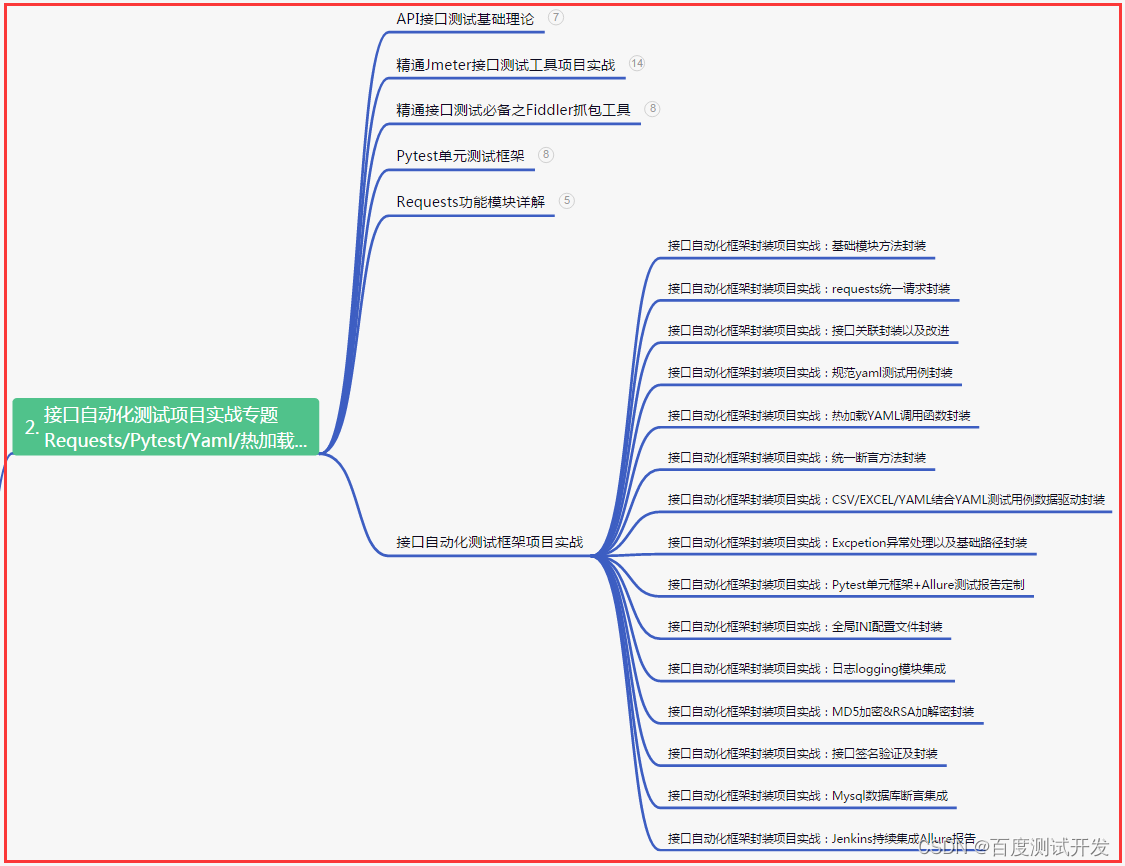
三、Web自动化项目实战
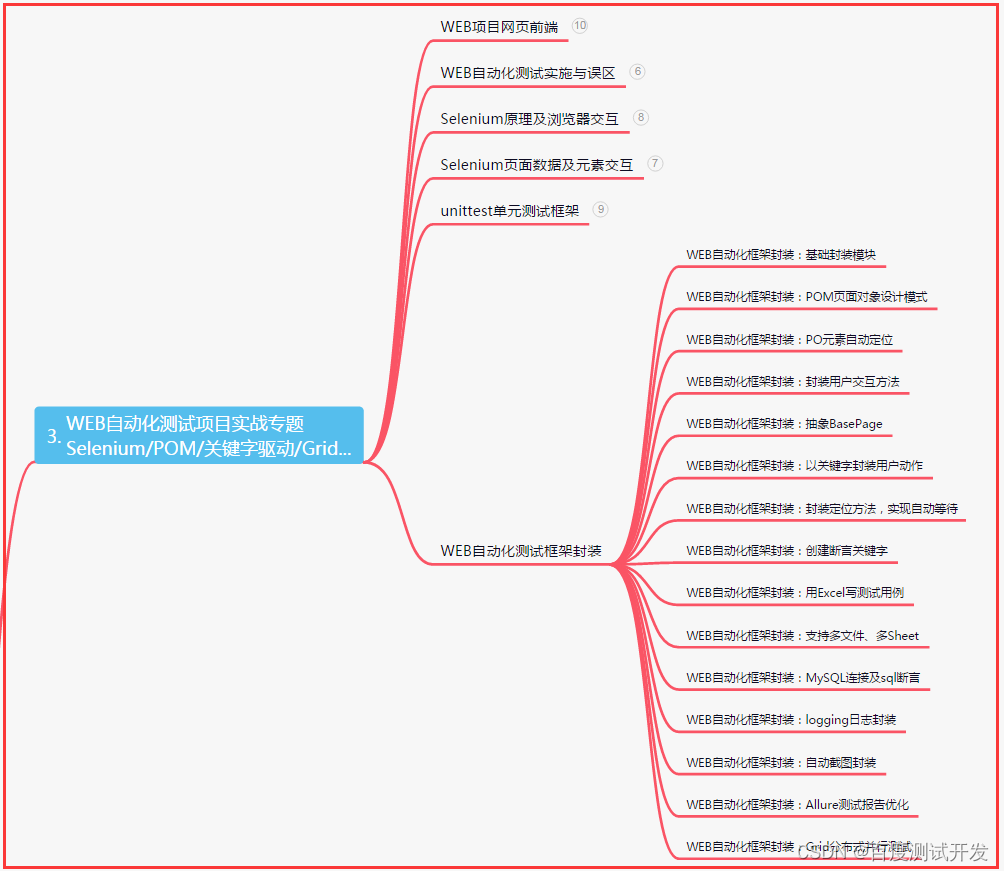
四、App自动化项目实战
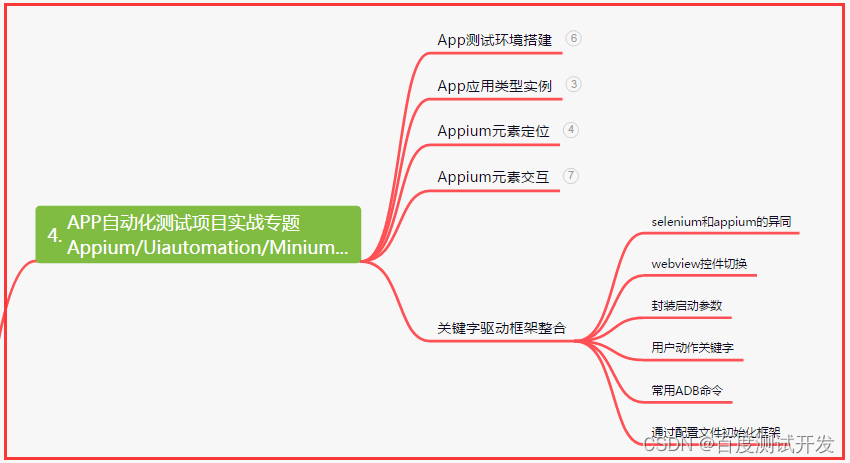
五、一线大厂简历
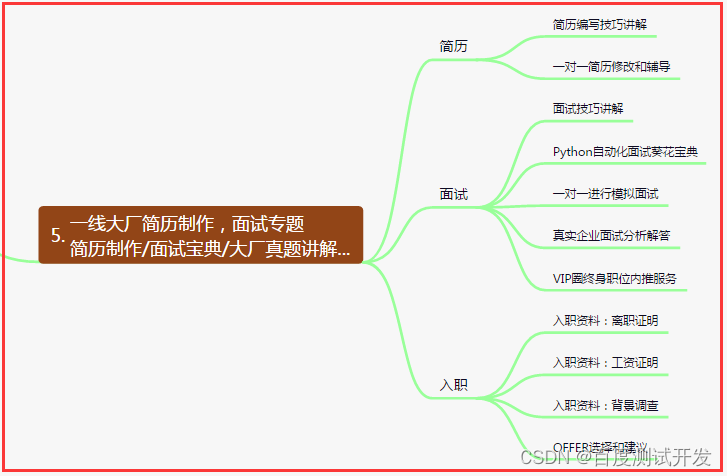
六、测试开发DevOps体系
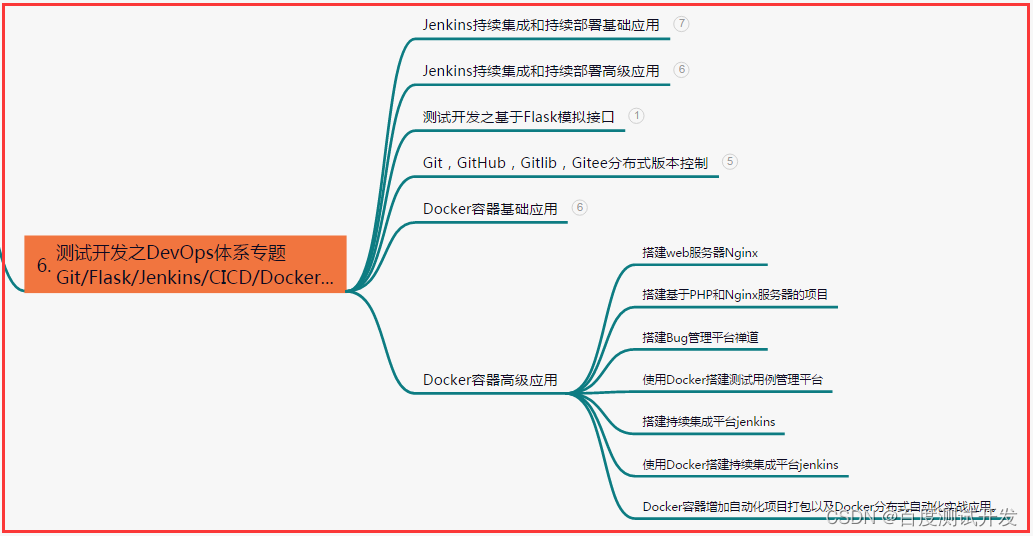
七、常用自动化测试工具
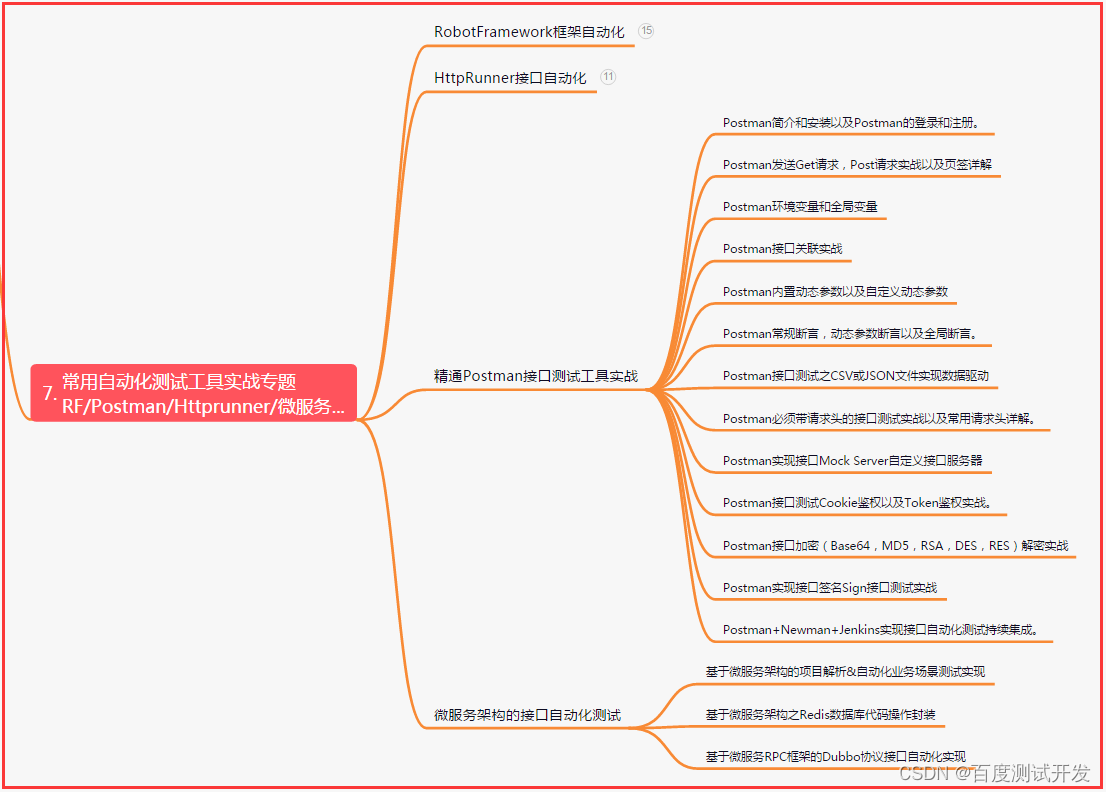
八、JMeter性能测试
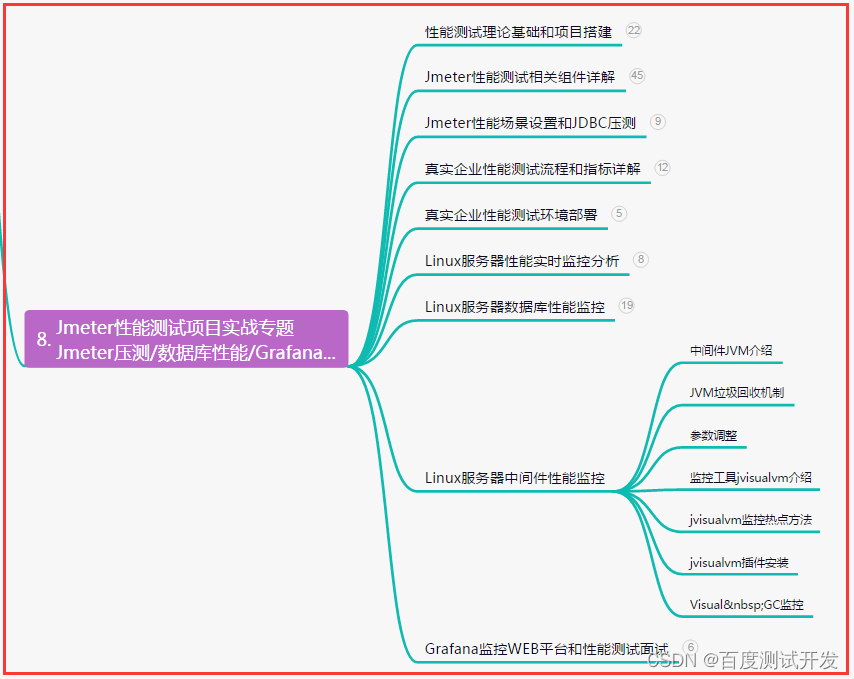
九、总结(尾部小惊喜)
不要畏惧困难与挑战,它们是成长的阶梯。奋斗不仅是一种目标的追求,更是一种积极向上的生活态度。坚持努力,相信自己,无论何时何地,你都能创造出属于自己的辉煌!
勇往直前,追逐你的梦想。不要害怕失败和困难,因为正是在挑战中,我们才能找到无限的可能。只要坚持不懈,努力奋斗,成功将触手可及!
生命如同一场马拉松,坚持奋斗才能到达终点。更重要的是,在奔跑的过程中,培养出自己的毅力和意志力,这才是成为成功者的关键所在。
-
相关阅读:
25个Matplotlib图的Python代码,复制直接可用
R语言顶级期刊配色
计算机毕业设计ssm+vue基本微信小程序的一起考研学习系统
uni-app 小程序跳转其他小程序方法
CentOS7 安装K8S 单节点
LeetCode--3.无重复字符的最长子串
C++ 可调用对象绑定器bind()
信息检索 | 常见专类信息检索系统一览
git常用命令
LeetCode算法位运算—只出现一次的数字
- 原文地址:https://blog.csdn.net/m0_70102063/article/details/133945309
